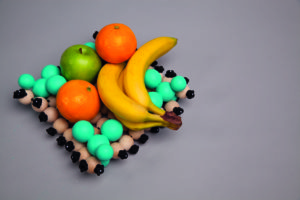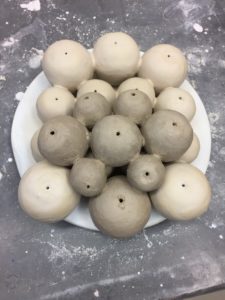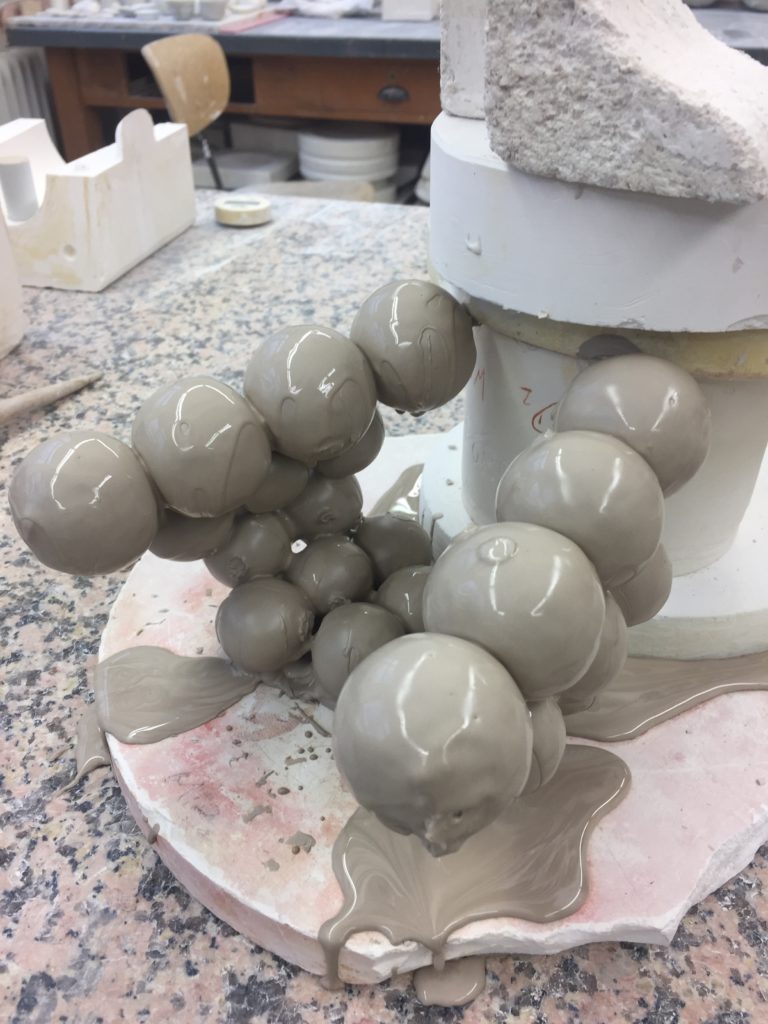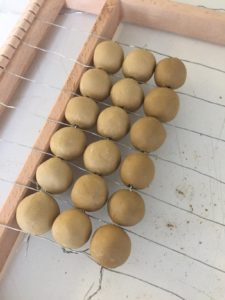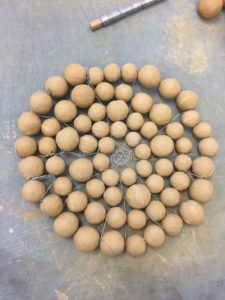SPHERICITY
As a goldsmith, in my first research on Kenya I was particularly interested in the colorful pearl jewellery of the Massai and the unusual body decorations.
I took my first inspiration from the traditional crafts of pearl weaving and made my first attempts with clay balls woven with wire. I produced larger balls of clay and experimented with arrangements and sizes of beads in the wire braid. The stability of the bead braids was still expandable, but the new dimension of the pearls and the proportions aroused my interest and I finally focused on the ball itself and its connection.
New models with wire-woven paper balls emerged: different combinations of woven ball surfaces to three-dimensional objects.
After porcelain experiments, in which the balls were dipped and paper balls were coated with porcelain and burnt out, difficulties were found to connect several porcelain balls and arrange them in height. I came back to the simple porcelain ball. The balls themselves offered the real flexibility that I wanted and the round shape indicated to nestle and complement each other.
I set the focus on the aspects of flexibility and adaptability and came to my final design.
The porcelain balls are hollow cast. Holes ensure that rubber bands pass through the porcelain balls and connect them together. The woven beads form a flexible surface, which can be changed and shaped by solid wooden ball parts. So the arrangement and form is self-determinable. Not the vessel or the bowl stand in the foreground, but the action of self-design and use according to its own requirements. Flexible elements are given, but the object that is created is self-determined.




